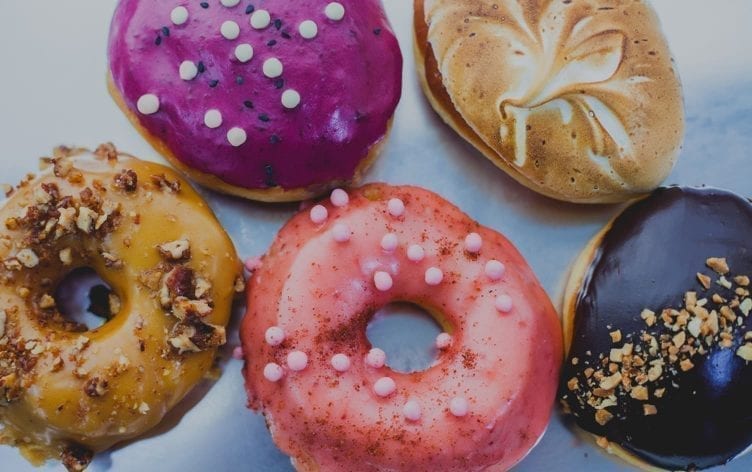
Ahh, cravings! Despite our best efforts, the desire to eat certain foods can get the best of us at times. These cravings can lead to poor food decisions that can derail even the most dedicated of healthy eaters. From cookies to potato chips, the foods we crave usually offer us little in return other than extra fat, sugar and salt we simply don’t need (and often feel better without).
Before you beat yourself up over your cravings, keep in mind that they are completely normal and experienced by almost everyone. Your desire for highly palatable foods containing sugar, fat and salt is rooted in biological need and is not innately bad. Unfortunately, it has become way too easy to satisfy these cravings.
Although you may not be able to completely avoid the foods you crave or turn off your impulses, it is possible to change the way you respond. By doing so, you can eat with confidence knowing you have control over these “junk” food cravings — and not the other way around.
What Causes Cravings
Cravings happen for many reasons, but research has shown that we often crave the foods we love most when we restrict them (Think: strict dieting) and/or when our meal plan lacks variety. In some instances, cravings are triggered by the thoughts of foods we’ve given up or haven’t had in awhile.
In fact, if you make changes too quickly or are too restrictive, you may find your cravings intensify. Why? Because some of those highly palatable foods we’ve come to love activate pleasure centers in our brain that keep us wanting more. Shut off the supply, and get ready for your brain to throw a fit. (This is why we encourage enjoying all foods and making gradual diet changes.) By doing so, you’ll give your brain and taste buds time to adjust and also discover creative ways to add flavor, color and enjoyment to your plate without relying heavily on sugar, fat, or salt, like so many manufactured foods tend to do.
How to Identify a Food Craving
When a food craving strikes, it’s usually pretty easy to identify because of the intense drive behind it; however, pinpointing your exact need or desire may not always be simple. This is especially true if the craving you experience feels more general than specific –– like when you want something, you just don’t know what.
If you struggle to know what your body is trying to tell you, consider keeping track of your emotions when you eat or experience cravings. This can help you notice trends in your eating habits and allow you to better understand and process the signals your body is sending.
5 Tips to Curb Junk Food Cravings
Knowing why and when your cravings occur can help you prepare to deal with them. Whether you are changing your environment to experience them less often or are developing ways to respond differently, it is possible to overcome most junk food desires. Here are a few ways to set yourself up for success:
1. Set the stage. Stress, tiredness and boredom are all states of mind that can leave you more susceptible to crave foods that provide temporary comfort. Before you start making changes to your diet, make sure you are creating an environment that promotes success. Getting enough sleep, taking time to relax and getting enough physical activity each day are all positive steps.
2. Make time for meals. Working consistent meals into your routine is an all-around good strategy. Not only does it provide the opportunity to incorporate a variety of foods into your day, but having meals every 4–5 hours also ensures you never go too long without eating. This prevents you from becoming overly hungry, a state in which tempting foods become even harder to resist.
3. Know which foods set you up to fail. No matter how much you plan or how familiar you get with your food cravings, some foods will always make it difficult to stay on track. By identifying your list of most craveable foods, you can plan ahead. For some people, this may mean serving hard-to-resist foods at meals, rather than by themselves. For others, it may mean buying more manageable portions to enjoy at a specific time of day or keeping them out of the house entirely. No matter what works best for you, knowing which foods are just too hard to resist can make it much easier to manage your response.
4. Try eating something different. A food craving is a desire that you have the choice to act on or not. Even though that bag of potato chips may sound good, you may find that a crunchy vegetable sprinkled with salt satisfies that craving just as well. (Perhaps not, but it’s worth giving it a shot.) As you continue to identify your cravings, you may find it has less to do with the food itself and more to do with a specific characteristic. For example, the potato chips are salty and crunchy. Crunchy vegetables dipped in hummus might be a satisfying fix.
5. Avoid eating the food you crave by itself. Just because junk food offers little benefit from a nutritional standpoint, it doesn’t mean you can’t ever enjoy it. Instead of avoiding these types of foods altogether, consider pairing a smaller portion with a more nutrient-rich food. For example, portion out a 1-ounce serving of potato chips to eat alongside a turkey sandwich for lunch. You could do this when the craving strikes or look to incorporate foods you tend to crave at meals. Either way, it’s a great way to manage food cravings without depriving yourself of the foods you love.
Although we may never be able to completely avoid the foods we crave, we can change the way we approach them. By implementing a few of these strategies you can overcome cravings and begin enjoying the foods you love in a realistic and balanced way.



